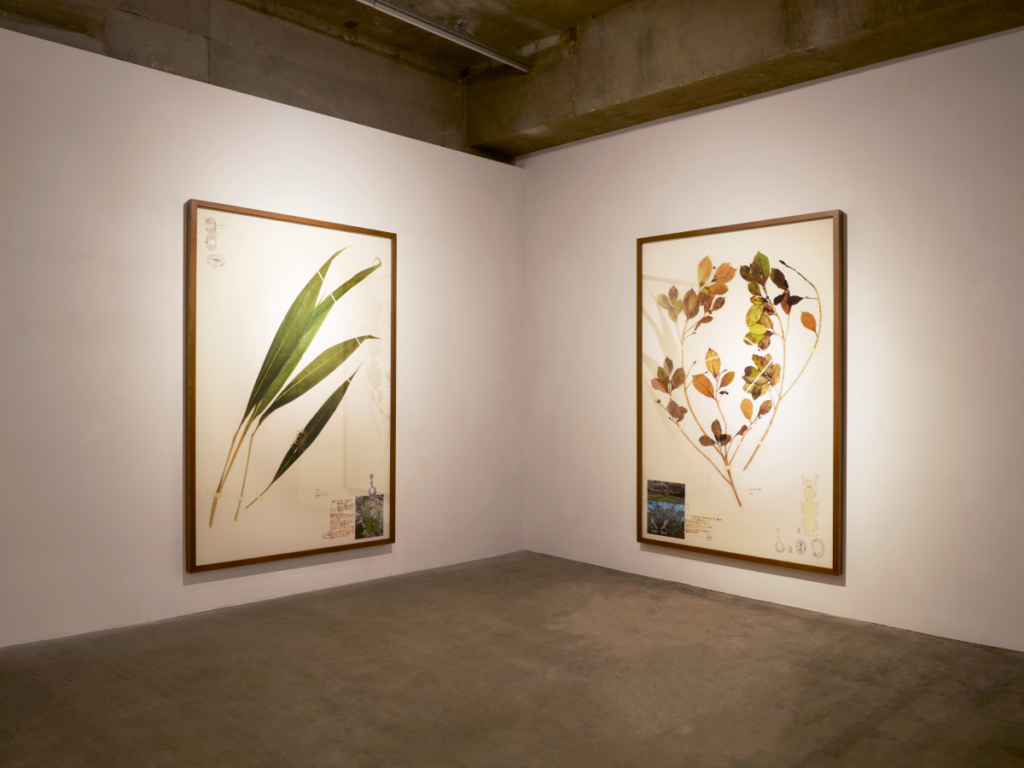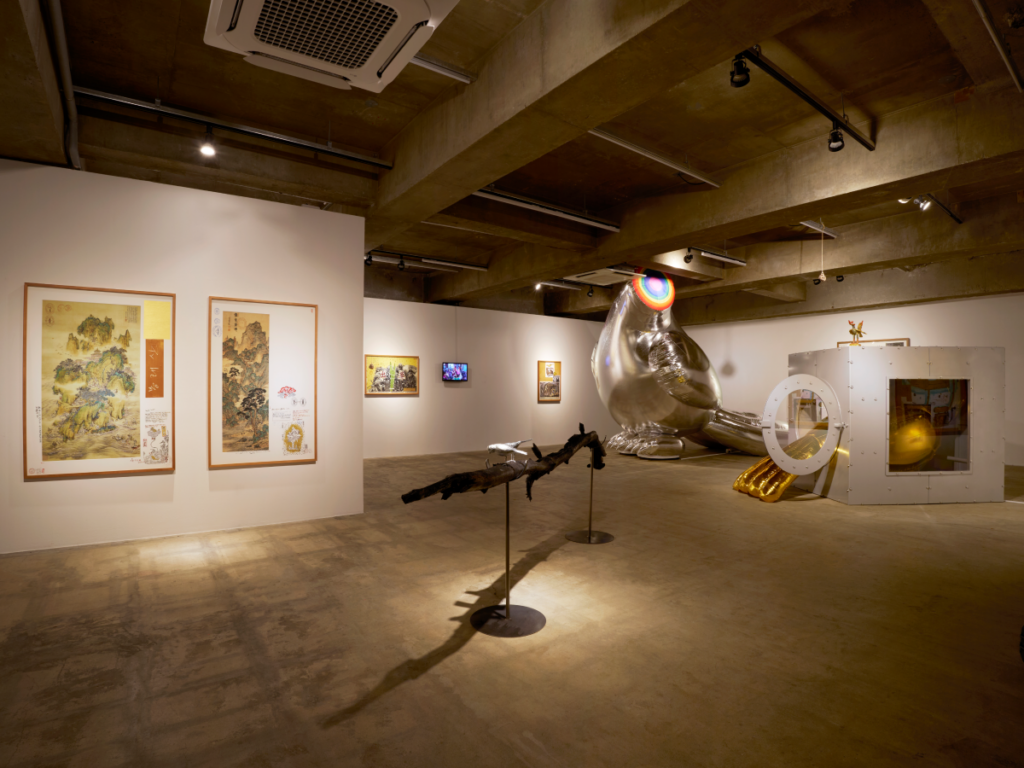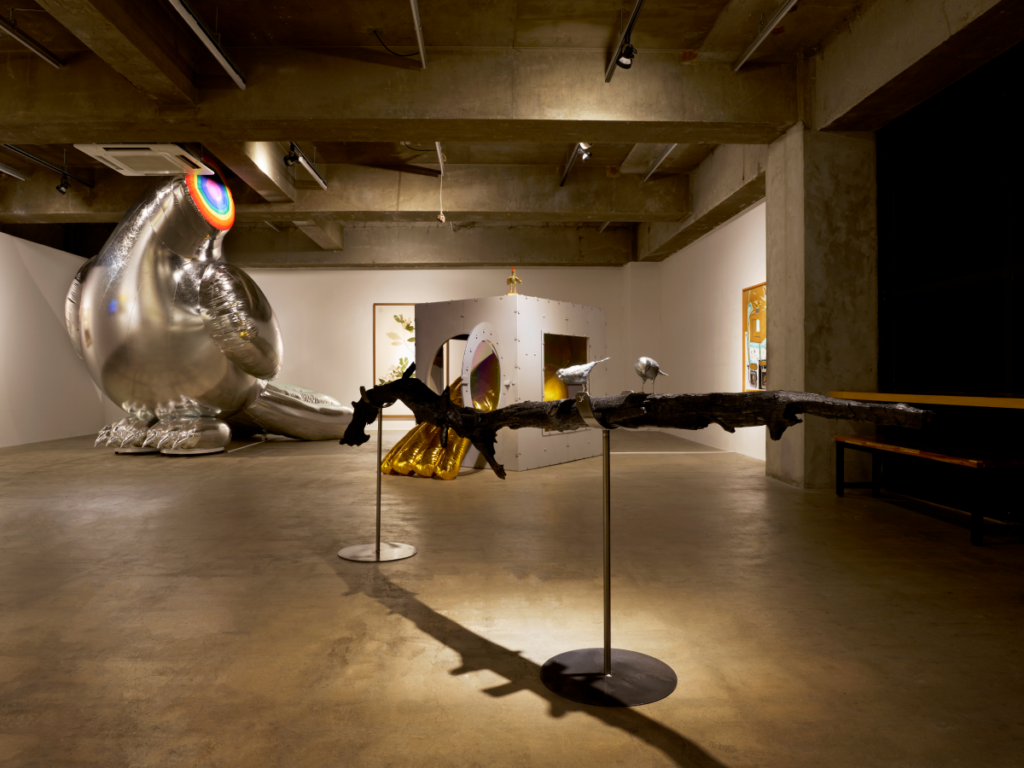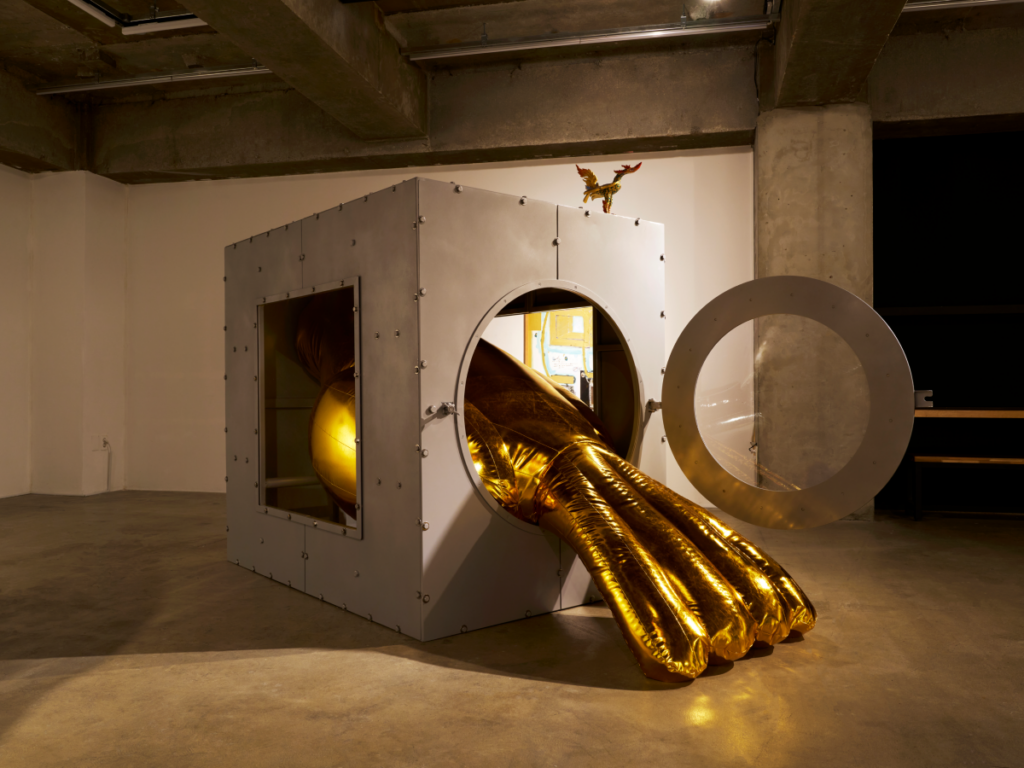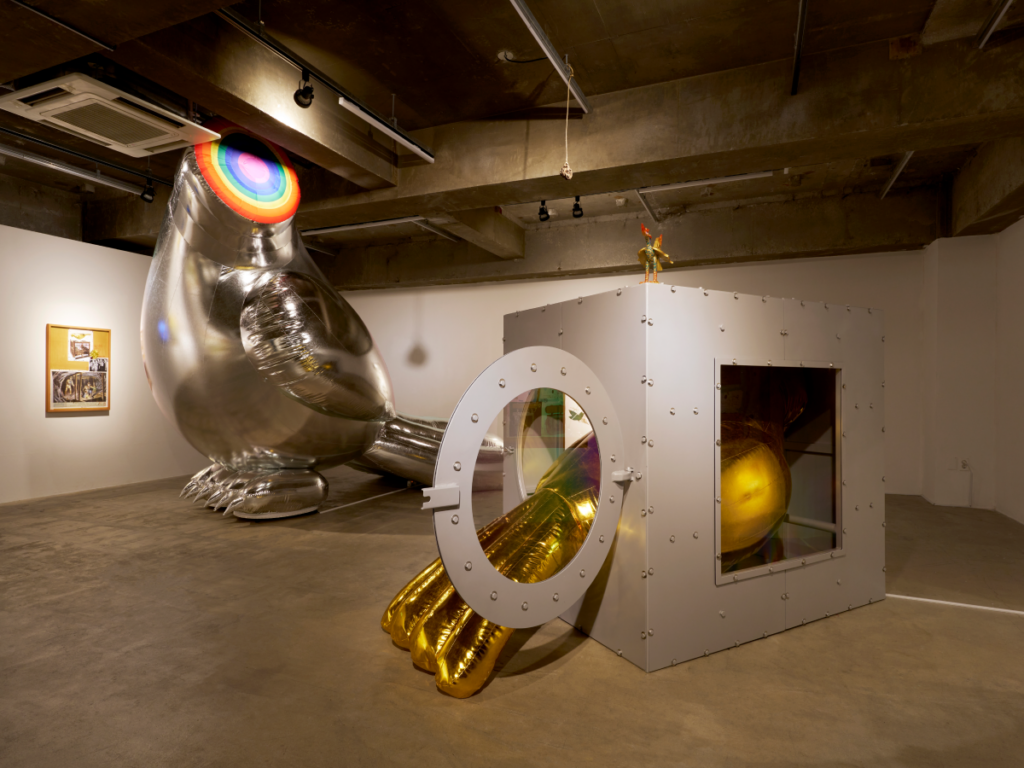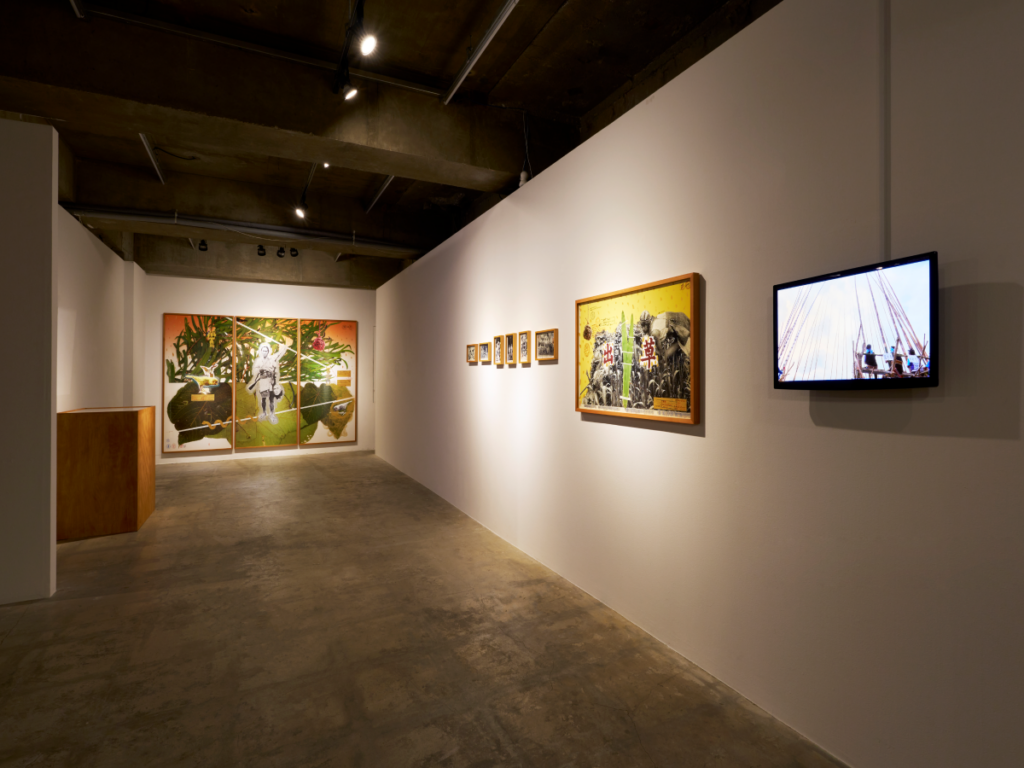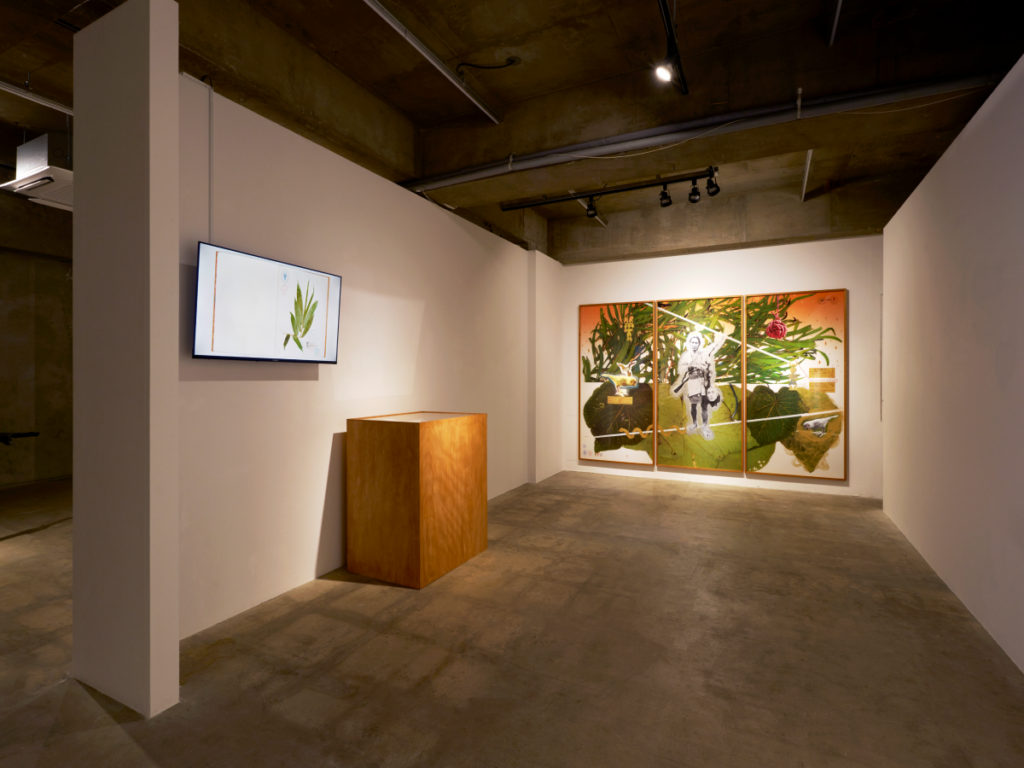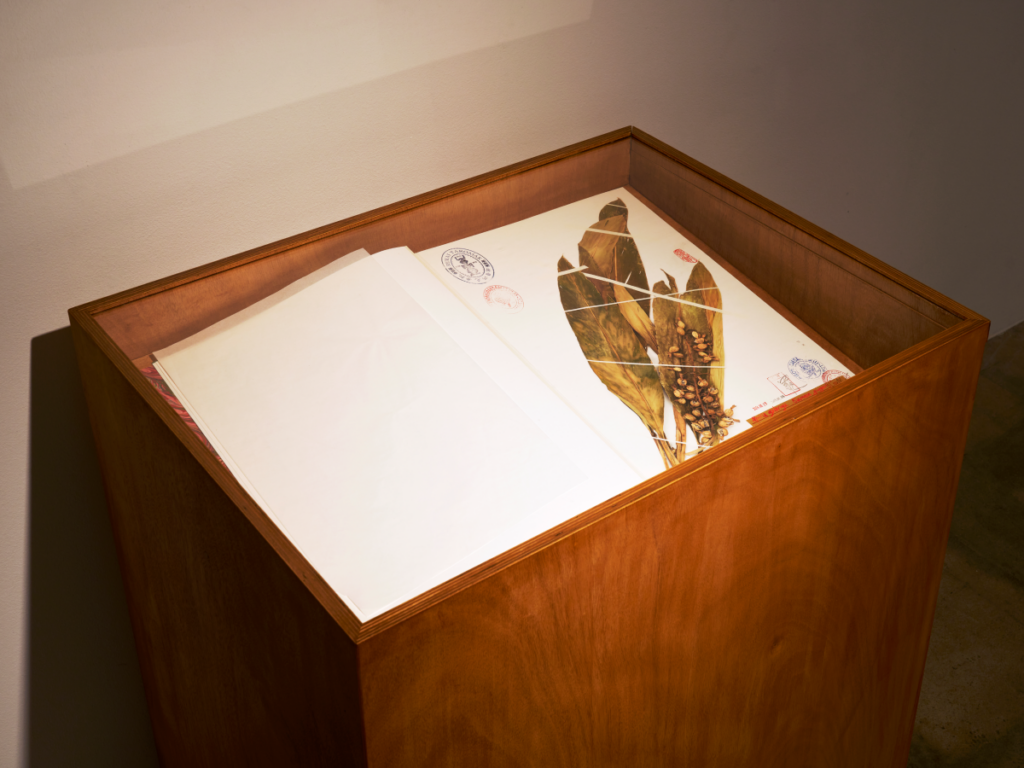

평일 (Weekday) : 12:00pm~18:00pm
주말 (Weekend) : 12:00pm~18:00pm
휴관일 (Closed days) : 일(Sun), 월(Mon), 공휴일(a public holiday)
《포모사 프로젝트》는 지속적으로 대만 고산족 원주민과 식물의 제의적 관계성에 대해 연구해 오고 있는 대만국립선사박물관의 장치산 박사(식물학)의 제안으로 시작되었다. 과거 포모사 원주민은 오스트로네시안으로서, 기록 이전부터 이곳에 살아오고 있었던 것으로 보인다. 이곳은 지리적으로 중국과 가까워 원주민들은 끊임없는 침략과 약탈을 겪어왔고, 특히 청시대에는 착취에 가까운 지배를 받았다. 또한 포르투갈과 네델란드인들이 섬을 점유하기도 하였으며 청일전쟁 이후에는 일본의 식민지배를 거쳐 중국본토에서 들어온 국민당의 지배를 받았다. 이러한 혼란스러운 역사 속에 그들은 안전한 곳을 찾아 깊은 산속으로 들어왔을 것으로 추정된다. (이번 전시를 계기로 실제 장치산 박사님을 초대하여 연구내용을 들어보는 자리를 마련한다.)
작가는 이주의 역사를 통해 산 위에 살게 된 타로막(Taromak)과 파이완(Paiwan) 부족이 자연과 스스로를 분리시키지 않는 삶의 방식과 처절한 관습을 고수하는 지점에 관심을 가지게 된다. 그에 의하면, “나는 2018과 2019년, 두 차례 대만 현지에 거주하며 두 부족들이 산속에서 삶에 이용하거나 제의의 목적으로 사용하고 있는 식물들을 채집하고, 특히 파이완부족의 조상과 자연의 신을 위한 축제 말레벡(Maleveq-오년제)에 사용되는 신성한 의식 그리고 독특한 관습과 장치들에 관심을 갖게 되었다. 고산족인 그들은 자신을 둘러싸고 있는 자연을 경외하고 숭배하였다. 자연속의 신이자 그들의 조상이며 정령들은 그들에게 생존의 조건들을 내어 주었고 고산족들은 엄격한 금기와 규율을 만들어 자연과의 공간을 공유하며 지금까지 관계를 유지하면서 균형을 이루며 살아왔다. 관계(균형)의 파괴는 곧 생존의 위협임을 본능적으로 알고 있기 때문이다. 나는 인간에 의해 파괴되고 있는 생태계가 역설적으로 인간을 위협하고 있는 현실에 대한 하나의 대안적 관점을 가지고 고산족의 삶을 빌어와 그 과정과 조형적 실험들을 프로젝트에 담아내고자 한다.” (작가노트에서)
이번 전시 《봉래산-포모사 프로젝트》는 진시황이 불로불사를 위해 찾아 헤맨 봉래산의 불로초와 포모사(포르투갈어로 ‘아름다운 섬’이란 뜻으로, 16세기부터 포르투갈인들이 부르던 호칭)의 식물을 연결한다. 동서고금을 통해 전설의 낙원이 인간의 유한함과 그 한계너머의 욕망을 드러내듯이, 제국주의자들에게 신비하고 아름다운 미지의 포모사섬은 소수약자의 입장과 삶을 추적하여 상상한다면 차이를 찾아볼 수 있을 것이다. 유토피아/디스토피아는 현실과 관계하지만 가상으로 존재하는 것으로 실상은 이와 다른 것이다. 섬의 약탈자들을 피해 고산지역에 고립된 삶 속에서 그 들만의 관습과 영역을 지키고, 또는 생태계와의 균형을 위해 필사적으로 출초(出草, 원주민의 머리 베기 관습)를 단행했던 그들의 결연한 삶은 야만적이고 원시적이라 비하할 수도, 역으로 친자연의 표본으로 미화할 수도 없는 또 다른 자연의 삶인 것이다.
작가는 대만 고산지대의 식물표본을 가상의 불로초 이미지 기록들과 함께 마치 문헌박물관에 보관되어 있는 사료처럼 정성껏 식물채집책을 제작하고 기록한다. 서바이벌을 위한 영역표시로 원주민이 심었던 낯선 식물이나 출초한 두상을 대체하고자 줄기를 꼬아 전시했던 식물은 그들의 관습과 삶을 이해하는데 도움을 주고, 그 처절함과 단호함에서 작금의 위기 앞에 주저하는 비자발적 우리의 상황을 뒤돌아보게 한다. 사실 환경변화와 기후위기는 불안을 가중시키고 다분히 위협적이지만 개별자의 특정한 행동강령으로 소급하여 강제하기엔 난제를 포함하고 있기 때문이기도 하다.
여기에 작가는 봉래산과 현실의 위기를 경고하고 경각심을 고취시킬 장치로 카나리아를 연결시켜 긴장감을 연출한다. 20세기 후반까지 유럽 광부들이 일산화탄소에 민감한 카나리아를 막장에 데리고 들어가 안전을 도모했던 ‘감시종’으로서의 기능을 작품속으로 소환하여, 대형 카나리아 케이지와 목이 없는 카나리아를 제작하여 전시한다. “전시장에 설치된 새장의 모델은 광부들이 유사시 산소가 부족하여 생명을 잃어가는 카나리아를 구하기 위해 고안된, 새장위에 작은 산소통이 구비 되어있는 형태이다. 그러나 과연 당시 광부들은 유사시 위기상황의 탄광에서 카나리아를 살리려는 노력에 얼마나 집중하였을 지 넌센스이다. 인간의 관점에서 카나리아는 어떻게 보일까?” (작가 노트에서) 멜팅포인트가 29.76도로 손에서도 녹는 갈륨(Gallium)이란 재료로 만들어진 두 마리 새는 지구온난화에 갇힌 우리의 모습을 환유하면서, 경종장치로서 작동하고 있다. 알람 장치를 상실한 철조 새장 밖으로, 작년 봄 인왕산 화재에서 검게 타버린 나무를 바라보는 관람자는 기후 위기가 피상성을 너머 코 앞에 다가온 위협임을 체감할 수 있을지 모른다.
나현 작가는 스스로 환경운동가는 아니라고 말한다. 다만 그는 현재의 위기가 인간활동의 인과관계 속에서 가속화되고 있음에 주목하고 활동을 헤집어 보고 있다. 우리 한국인에게 익숙하지 않은 해외의 역사적 사건들을 고고인류학자와 같이 채집·연구하여 작가적 개입을 시도하는 이유는 무엇일까? 그는 우선 사건 속 상이한 타자들의 입장을 교차하고 그 이면의 모순을 탐색하기 위해 방대한 양의 리서치와 객관적 자료를 검토하면서 드로잉이나 규모 있는 설치를 통해 정보를 변위시켜 극적인 메시지나 정서를 강화해왔다. 이러한 실천과정은 절대진실의 폭력성이라는 불편한 진실을 끄집어 균열을 내고 상상으로 틈을 파헤치는 작업으로 작가가 스스로에게 부여한 임무를 따르는 모습을 보여주고 있다.
NA Hyun has continuously conducted projects that investigate the records of historical events, build archives, and expand reality from a personal perspective. The current exhibition, ""Bongraesan-FORMOSA Project,"" takes an anthropological approach by collecting records and materials of the legendary Bullocho, the mysterious herb of eternal youth, from Mt. Bongrae and the plants of Formosa (Taiwan Island). It sends a warning message, reminding us that the current climate crisis is nature's retaliation against humanity. The ""Formosa Project"" was initiated at the suggestion of Dr. Chang, Chi-san (Botany) of the National Museum of Prehistory in Taiwan, who has been continuously researching the ritual relationship between the indigenous highland tribes of Taiwan and plants. The indigenous people of Formosa, who were Austronesians, appear to have lived there since before recorded history. Geographically close to China, these indigenous people have endured constant invasion and plunder, especially during the Qing Dynasty, when they faced near-exploitative domination. In addition, the Portu guese and Dutch occupied the island, and after the First Sino-Japanese War it came under Japanese colonial rule, followed by control by the Kuomintang from mainland China. In the midst of this tumultuous history, it is estimated that the indigenous people sought refuge in the deep mountains for safety. (This exhibition will also include a session in which Dr. Chang will be invited to discuss his research). NA is interested in the point where the Taromak and Paiwan tribes, who came to live in the mountains through a history of migration, maintain a way of life and harsh customs that do not separate them from nature. According to the artist, ""During my two stays in Taiwan in 2018 and 2019, I collected plants used by these two tribes for living in the mountains or for ritual purposes. I was particularly interested in the sacred rituals and unique customs and devices used in the Maleveq Festival (a five-yearly event) for the ancestors and nature gods of the Paiwan tribe. As highland tribes, they revered and worshipped the nature that surrounded them. The nature gods, their ancestors and spirits provided them with the conditions for survival, and the highland tribes created strict taboos and rules to share space with nature, maintaining and balancing their relationship to this day. They instinctively understand that the destruction of this relationship (balance) is a threat to survival. I intend to present an alternative perspective on the reality that ecosystems destroyed by humans paradoxically threaten humanity. Through this project, I aim to incorporate the life of high mountain tribes, along with the processes of archiving and sculptural experimentation.(from the artist's statement) The exhibition ""Bongraesan-FORMOSA Project"" connects Bullocho, the mythical elixir of immortality sought by Qin Shi Huang on Mt. Bongrae, with the plants of Formosa (a name that means ""beautiful island"" in Portuguese and has been used by the Portuguese since the 16th century). Just as legendary paradises throughout history and across cultures reveal human mortality and the desire to transcend it, the mysterious and beautiful unknown island of Formosa as perceived by imperialists reveals stark differences when imagined from the perspective of indigenous minorities. Utopias and dystopias relate to reality, but exist virtually, different from the real world. The determined lives of those isolated in mountainous regions to escape island plunderers, preserving their customs and territories, or desperately practicing headhunting (the indigenous custom) to maintain balance with the ecosystem, represent another form of natural human existence. These lifestyles cannot simply be dismissed as barbaric and primitive, nor idealized as perfect examples of harmony with nature. NA meticulously creates and documents a botanical collection book, treating specimens from the high mountains of Taiwan alongside imagined records of the mythical elixir of immortality like artifacts in a literary museum. The plants, NA Hyun Solo Exhibition Bongraesan-FORMOSA Project 2024.08.06.tue - 09.28.sat severed heads, help us understand their customs and lives. He reflects on their desperation and deter mination, prompting us to reconsider our own involuntary hesitation in the face of contemporary crises. The reality of environmental change and climate crisis is exacerbating fears and posing clear dangers, but there are complexities involved in responding to these through concrete individual measures. In addition, NA creates a sense of tension by linking Mt. Bongrae, and the current crises with the image of a canary, which is meant to warn and raise awareness. Until the late 20th century, European miners used canaries, which are sensitive to carbon monoxide, as ""sentinel species"" for safety. He incorporates this function into the work by constructing a large canary cage and a canary without its head. “The birdcage model in the exhibition resembles those used by miners, with small oxygen tanks on top to save the canaries when oxygen levels are low. It is questionable, however, how much effort the miners of the time really put into saving the canaries in crisis situations. How do canaries appear from a human perspective?” (from the artist's statement) The two birds, made of gallium, a material that melts at 29.76 degrees Celsius and can melt in your hands, symbolize our entrapment by global warming and serve as a warning signal. Outside the birdcage which has lost its alarm system, viewers can contem plate the charred trees from last spring's fire on Mt. Inwangsan and realize that the climate crisis is an immediate threat rather than a distant abstraction. NA Hyun does not consider himself an environmental activist. However, he closely examines and uncov ers activities that reveal how the current crisis is accelerated by human actions. Why does he collect and study historical events from abroad that are foreign to most Koreans, like an archaeologist and an anthropologist? He does so in order to intersect the perspectives of various others within these events and to explore the underlying contradictions. Through extensive research and examination of objective materials, NA uses drawings and large-scale installations to displace information, thereby amplifying dramatic messages or emotions. Following the artist's self-imposed mission, this practice reveals the unsettling truth about the violence of absolute truths, creating fissures and excavating spaces with imagination.

